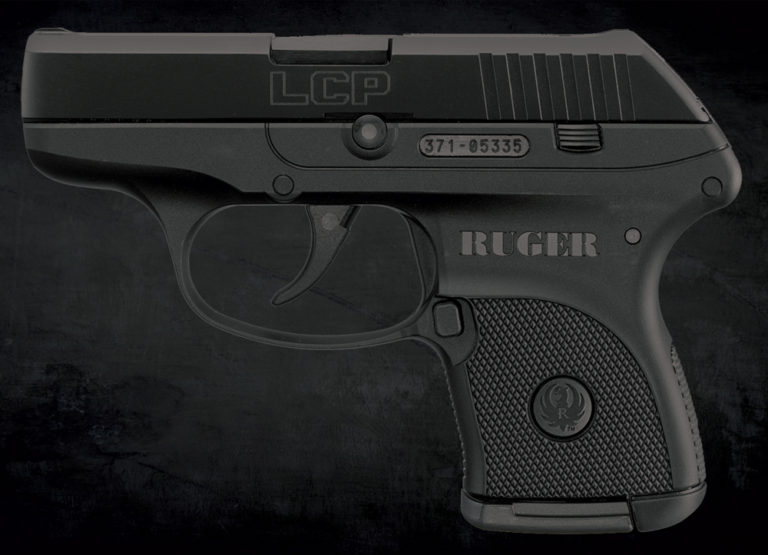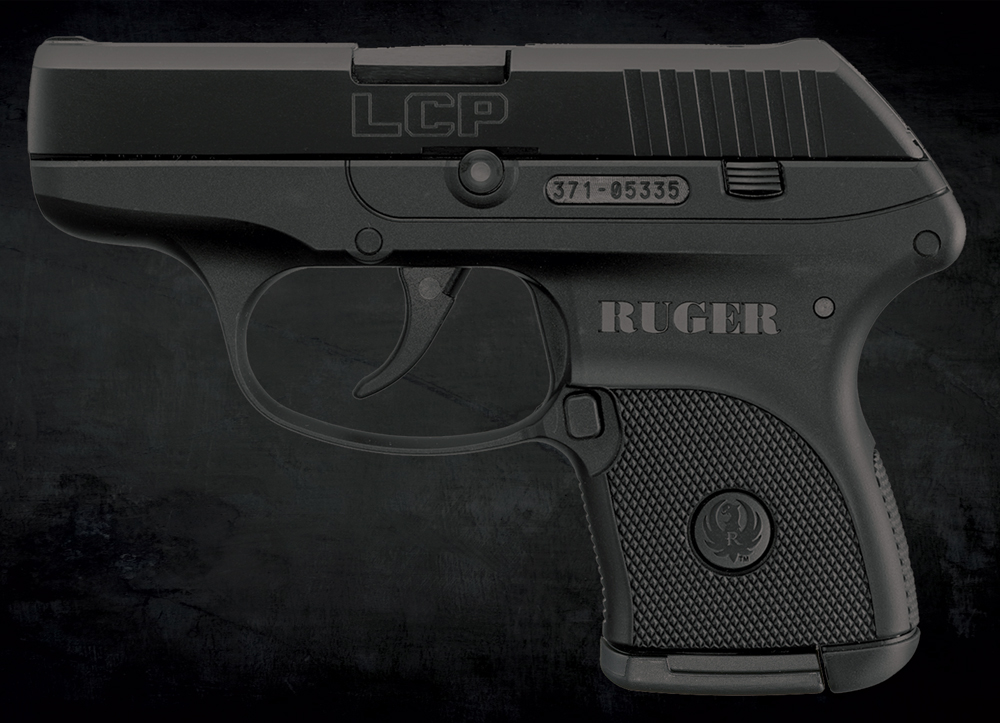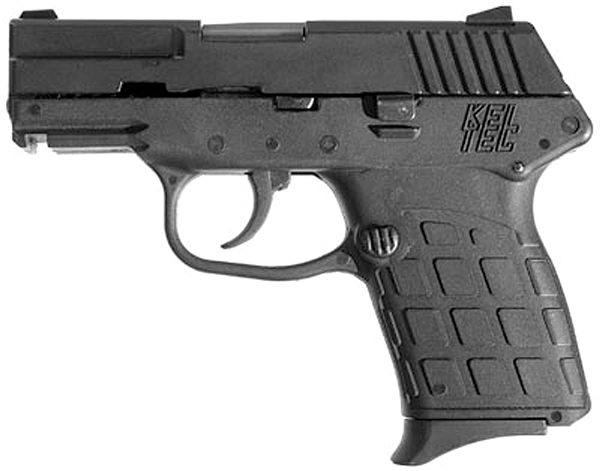

Here's what to look for when choosing a concealed carry backup gun for use in cold weather.
As I write this in early December winter has arrived with heavy snows and blizzard-like conditions across the country. Police officers, who don’t have the luxury of staying indoors when the weather turns bad, begin wearing cold-weather clothing; they also start losing rapid access to their service pistol.
Wearing gloves can further compound the problem. Under these conditions a backup gun stashed in a coat pocket becomes a necessary tool, not another nice-to-have piece of gear.
There are three basic requirements for the police handgun: it must be reliable; it must be of sufficient power to stop the deadly actions of an assailant; and it must be quick into action.
Since a backup gun may be less powerful and will likely hold fewer rounds than a service pistol, these requirements are a bit flexible, but still important. A small handgun in a coat pocket give another option when the weather requires us to wear clothing that may hinder our access to our primary sidearm.
Depending on where we conceal it on our person, the backup gun can be a real lifesaver when seated in our patrol vehicle, on a traffic stop, in a contact and cover or arrest situation that suddenly goes bad.
Tests have shown that by establishing the firing grip on the handgun either in a pocket or in a holster prior to having to draw the weapon, an officer can very quickly present the handgun if the situation escalates or he can simply shoot through the coat pocket if runs out of time and distance.
 While having the ability to shoot through the pocket of your winter duty jacket may give you the edge in a lethal force encounter, we need to understand that this technique will probably work best for us at arm’s length or less.
While having the ability to shoot through the pocket of your winter duty jacket may give you the edge in a lethal force encounter, we need to understand that this technique will probably work best for us at arm’s length or less.
Michael DeBethencourt (more about him in a minute) told me that he runs several exercises in his snubby program that allow the students to shoot through a coat pocket.
Since they have neither a visual nor a tactile index to confirm where the gun is on the target they are routinely disappointed in the results. Consider also this will probably be a technique that we will not practice.
So, for the sake of this article we will not consider shooting through a pocket. Let’s get the gun out and on target.
On the other hand, in the Gun Digest Book of Concealed Carry, Massad Ayoob tells us of a test he ran simulating an officer making a traffic stop, standing near the driver’s side door.
He started the test by establishing his grip on the revolver in his front pants pocket. When the PACT timer went off, Ayoob drew and fired a single shot on the target, which stopped the timer. The average time for him to react to the timer, draw and fire was 0.65 of one second.
This is probably something we are likely to practice and is especially useful info for those who carry the small pistol.
What are the handguns officers are most likely to choose as a backup gun, especially for cold weather? I checked with two friends of mine who I knew were likely to be up-to-date on this requirement, Michael DeBethencourt, a working police officer in Massachussetts, who also runs a very popular snubby revolver training program, and Rob Leahy, who makes superb custom holsters, and who was a resident of Alaska until last October.
They both told me the same thing, U.S. police officers have voted with their wallets and are buying the small .38 /.357 five-shot revolver as the backup gun of choice.
They tend to prefer the S&W 340 M&P, the Taurus CIA model and lately the new Ruger LCR, because these models have no exposed hammer to snag when drawing from concealment.
It was of interest to me to learn that even though police agencies have adopted the pistol as their primary handgun, the faithful revolver remains the top choice of most in the role of backup gun.

I say “most” because I know that some officers, given the option, might prefer the small pistol over the small revolver.
And there are some agencies that do not authorize the small revolver. In this case officers are likely to select a handgun such as the Kahr P380, the Kel-Tec P-3AT or the little Ruger LCP.
A small, flat pistol has a long history with cops. I can remember officers who carried the “Baby Browning”, a .25 auto, in a spare cuff case. Next came the Seecamp in .32 ACP that was so popular it was often back ordered for up to a year.
Seecamp owners liked to brag that they could hide their pistol in a shirt pocket. And now we have similar offerings from Kahr, Kel-Tec and Ruger in .380. But the small pistol will always be suspect in the reliability area, especially when dealing with heavy winter clothing.
1- By definition, the backup gun will be carried concealed where it will attract lint and moisture. Over time this can cause a problem with the small pistol because it has tight tolerances which can quickly foul.
2- You may need to shoot in close proximity to clothing that could snag on the firearm. The pistol is not as reliable for repeat shots if needed.
3- The small revolver can shoot a heavier bullet which is more likely to punch through winter clothing and insulation than a lighter load.
4- In extreme close quarters situations such as weapon retention, grappling and ground fighting scenarios, a revolver will tend to be more reliable than a pistol.
While we are on the subject of ground fighting, consider this from an officer I know who is the firearms instructor for his agency. His officers may choose a backup gun from a list of department approved revolvers and pistols.
The backup gun is carried in the cargo pocket of their duty pants in a holster that stabilizes the handgun in this pocket. With an empty handgun they practice drawing from the pocket from a variety of positions to include from the ground, left side, on their back and right side.
They have had several instances where the magazine release was activated by the weight of the officer lying on his pistol (still in the cargo pocket) during this drill.
So where should you carry your winter backup gun? For years we have carried it in the jacket pocket, on the side of our non-dominant hand, in the cold, wet and snow of winter.
Some may favor a front pants pocket or the cargo pocket depending on uniform styles. Some may favor a holster in the pocket for the backup gun and some may not.
The importance of the holster is that it keeps the handgun, and most importantly the handgun grip, in the same position without shifting in the pocket. That way there are no surprises when we reach for it.
We need to remind ourselves that if we favor the jacket pocket for the backup gun, if we go into some place warm and take off our jacket, we want to transfer the handgun to a pants pocket. We then reverse the process when we leave. This simple procedure keeps the backup gun with us at all times, on the same side of our body and always available to our non-dominant hand, coat on or coat off.
The jacket pocket might be the most accessible, but this is a very subjective decision. Regardless of where you carry you will need to practice getting your backup gun into play. Repetition is the key to making this a smooth operation. Start slowly and pick up speed.
Make note of anything that causes you trouble during the draw and work to mitigate that trouble. Remember this gun won’t be used often, but when you need it, the need will be immediate and intense. Of all the time spent on the backup gun project, the majority should be spent on getting the gun into action and figuring the best way to complete the draw.
And finally we need to mention the importance of ammunition selection for the backup gun that will be carried and possibly used in cold weather. Heavy cold-weather clothing in combination with the various types of insulation materials that might be encountered can pose a real challenge to handgun bullets.
A jacketed hollow-point that works just fine against lightweight summer clothing may plug up with material in a cold weather scenario and act like a solid bullet. This seriously degrades the performance of the backup gun.
The law enforcement sales representative for the ammunition manufacturer of the brand of ammo you are issued or are interested in, should be able to tell you how the round performs against clothing and should be able to provide you copies of the test.
The current standard is the FBI ammunition testing protocol, which has a test specifically designed for heavy winter clothing. The goal is to get penetration and expansion from the ammo you choose.

Next Step: Get your FREE Printable Target Pack
Enhance your shooting precision with our 62 MOA Targets, perfect for rifles and handguns. Crafted in collaboration with Storm Tactical for accuracy and versatility.
Subscribe to the Gun Digest email newsletter and get your downloadable target pack sent straight to your inbox. Stay updated with the latest firearms info in the industry.

![Best Concealed Carry Guns In 2025 [Field Tested] Wilson Combat EDC X9S 1](https://gundigest.com/wp-content/uploads/Wilson-Combat-EDC-X9S-1-324x160.jpg)


![Best 9mm Carbine: Affordable PCCs [Tested] Ruger Carbine Shooting](https://gundigest.com/wp-content/uploads/Ruger-Carbine-Shooting-100x70.jpg)
![Best AR-15: Top Options Available Today [Field Tested] Harrington and Richardson PSA XM177E2 feature](https://gundigest.com/wp-content/uploads/Harrington-and-Richardson-PSA-XM177E2-feature-100x70.jpg)

Double action only autos are really quite useless unless you are shooting at not more that a couple of feet. Example: I can hit a man size target at 25 yards with a browning .25acp but I will miss the same target completely with a double action only pistol of the same size at only 7 yards.
Also be aware that the current rage over striker fired pistols is not without its drawbacks. Their firing pin energy is about half that of hammer fired guns so shooting a striker fired pistol in the cold, especially if they are dirty or do not have a low temperature lubricant makes the gun far more likely to misfire.
Doubt my word? Take an empty case and seat a high primer in it, no power, no bullet. Now put the empty Case in the chamber and try and fire a striker fired gun and it will misfire, try the same test with a hammer fired gun and it will fire. There is no argument with this test, none.
Firing a hammerless pistol from inside a coat pocket can be problematic. . A hammerless revolver would be a far better choice over a pistol. The pistols slide action can catch the pocket or pocket lining causing an instant malfunction. This is far less likely to happen with a revolver.
I have a favorite that is a pistol, the Kahr MK40. Compact, powerful, accurate and reliable. It isn’t much bigger than an LCP (weighs 23.1 vs 9.4) but delivers a deadlier blow. Comes with a 5 & 6 round mag, but you can use the bigger 7 round mag as well. Still a pretty small package. Another powerful pocket package is the S&W model#632 327 magnum, 6 rounds and almost the same power as a 357. The MK40 is one of my regular year round carry choices, it covers the 4 main needs; Reliable, Accurate, Powerful, Compact. It’s 6 ounces more than an LC9 or Kimber Solo, but this is a 40S&W and it’s size is overall a smaller package, just slightly heavier. I have night sights on mine, with a Hogue Handall Jr sleeve, recoil seems non-existant. The S&W 327 is way worse, and so is the LCP without a Handall Jr on it.
Enjoyed your article. My choice is Ruger SP101 KSP-321XL spur-less hammer with Crimson Trace LG-303 Lasergrips. I love this little Ruger’s natural point of aim, plenty powerful in 357 mag and nothing to snag and the grip is secure. I wear a ankle holster or in the coat pocket during colder months and put in a cargo pocket or deep pocket with shorts or pants in the warmer weather.